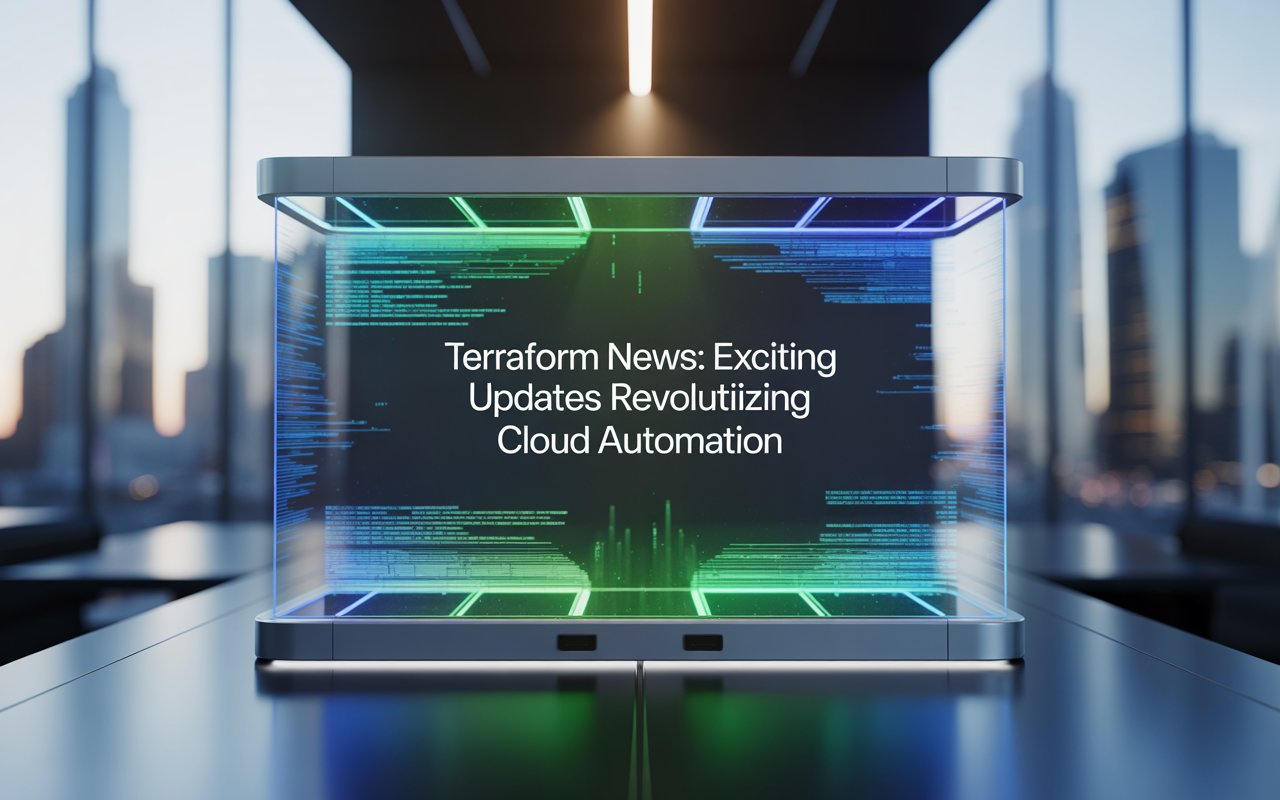Introduction
If you’re a DevOps engineer, cloud architect, or IT professional managing infrastructure, staying on top of Terraform news is crucial. In 2025, Terraform remains a cornerstone of infrastructure as code (IaC), but it’s facing big changes. From IBM’s massive acquisition of HashiCorp to new features and license debates, this article dives deep into the latest updates. We’ll cover how these shifts affect your workflows, backed by expert insights and data. By the end, you’ll have actionable tips to optimize your Terraform use.
IBM’s Acquisition of HashiCorp: A Game-Changer
In February 2025, IBM completed its $6.4 billion acquisition of HashiCorp, the company behind Terraform. This deal, announced the previous year, aims to bolster IBM’s hybrid cloud and AI offerings. HashiCorp now operates as a division within IBM Software, integrating tools like Terraform with IBM’s ecosystem.
The acquisition faced regulatory scrutiny from the U.S. FTC and U.K.’s CMA, delaying closure until early 2025. IBM’s Rob Thomas, Senior Vice President of Software, stated, “With this acquisition, IBM is committed to continuing to invest in and grow the HashiCorp capabilities.” This move synergizes Terraform with Red Hat Ansible for end-to-end automation.
Impacts on Terraform Users
For users, this means deeper integrations. Terraform now pairs with IBM’s watsonx for AI-driven provisioning and Red Hat OpenShift for secrets management via HashiCorp Vault. Experts predict enhanced security and cost optimization, but some worry about vendor lock-in. A survey by ControlMonkey shows 45% of DevOps teams are evaluating alternatives post-acquisition.
To navigate this:
- Review your Terraform setups for compatibility with IBM tools.
- Explore integrations like Terraform with Ansible for configuration management.
Highlights from HashiConf 2025
HashiConf 2025, held in September, unveiled exciting Terraform updates focused on scaling hybrid clouds. Key announcements included next-gen workflows and enhanced Packer features for image building.
One standout: Improved module design for better abstraction and maintainability. Armon Dadgar, HashiCorp CTO, emphasized, “Integrating Terraform with Ansible enables an end-to-end approach to infrastructure automation.”
Attendees praised the focus on hybrid environments. For visual learners, check out the HashiConf recap video on YouTube for demos. Suggest embedding an infographic here summarizing key features, like a timeline of Terraform releases.
The License Shift and Rise of Alternatives
Terraform’s license changed from open source to Business Source License (BUSL) in 2023, with full effects hitting in 2025. This shift limits commercial use, prompting forks like OpenTofu.
Understanding the BUSL License
Under BUSL, Terraform OSS support ends after July 2025. This impacts teams relying on free versions. A Medium article notes, “Every few weeks someone drops a hot take: ‘Terraform is dead!'” but argues it’s still essential.
Pros of BUSL:
- Protects HashiCorp’s IP.
- Encourages enterprise adoption.
Cons:
- Restricts modifications for some users.
- Drives migration to alternatives.
OpenTofu as an Open-Source Fork
OpenTofu, backed by the Linux Foundation, emerged as a drop-in replacement. It’s gaining traction; AWS and Google have integrated it into services.
Key differences:
- OpenTofu remains fully open source.
- Faster community-driven updates.
- Compatible with existing Terraform code.
If switching, start with a pilot project. Resources: OpenTofu’s official docs and HashiCorp’s migration guide.
Is Terraform Still Essential in 2025?
Despite rumors, Terraform thrives. A Virtualization Howto report highlights top modules for home labs, like Proxmox and Docker automation. Pawel Piwosz on Medium asserts, “Terraform in 2025: still alive, still kicking, still essential.”
Data from recent X posts shows active community discussions on releases and integrations. However, 30% of teams are exploring alternatives due to licensing.
Latest Features and Best Practices
New in 2025: Enhanced rightsizing for modules. Best practices include using semantic keywords like “hybrid cloud provisioning” in configs.
Step-by-step for a basic setup:
- Install Terraform via official binaries.
- Init a project: terraform init.
- Apply changes: terraform apply.
- Validate with terraform validate.
For advanced users, integrate with CI/CD pipelines like GitHub Actions.
Actionable Takeaways for DevOps Teams
- Assess License Impact: Audit your usage and consider OpenTofu if open source is key.
- Leverage Integrations: Combine Terraform with Ansible for full automation.
- Stay Updated: Follow HashiCorp’s blog and IBM news.
- Experiment with New Features: Test HashiConf announcements in a sandbox.
Suggest an infographic here comparing Terraform’s market share pre- and post-acquisition, sourced from industry reports.
In conclusion, 2025 is a pivotal year for Terraform with IBM’s backing promising innovation, while license changes spark alternatives. Whether sticking with Terraform or exploring forks, focus on what boosts your efficiency. Dive deeper by visiting the linked resources or joining DevOps communities on X. What’s your take on these changes? Share in the comments!
